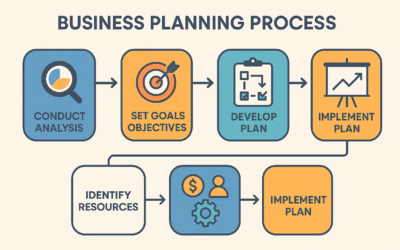As a business owner, you may be pretty knowledgeable about your company and the market in which you compete, but you may not fully understand the idea of branding. Even if you hear about it frequently from marketing experts and trade publications, it might be challenging to use effectively if you don’t know what it is from the onset.
What is branding?
Learning the definition of a brand is the first step in business 101.
The process of establishing a company, service, or product as distinctive and sets it apart from competitors is known as branding. Although some could argue that this is “positioning,” it is best to put it in this perspective so you know what you need to accomplish when it concerns branding.
Another way to think of branding is your target market’s impression of your company, its goods, or its services.
This can be accomplished visually using words, pictures, patterns, or other distinguishing characteristics in addition to a strong communication strategy.
Many businesses use a mix of techniques to build a distinctive brand. For instance, Coca-Cola establishes its brand with logo typography, name, color, and a unique product shape (the famed Coke Bottle). Not to mention the flavor of the actual product. Additionally, their reputation has been carefully developed over the years due to their marketing, message, and advertising.
What does “brand identity” mean?
A brand identity is the next aspect of business 101 that needs to be understood. A brand identity expresses the perception that you want people to have of your company. One can be created using various tools, including your logo, your name, your marketing materials, and your trademarks. If you don’t currently have one or want to improve the one you have, design firms can assist you in creating it from scratch.
Always think of your business’ brand identity as a framework that includes your logo design in addition to a system of complementary branding elements like official brand themes, symbols, and more.
Always use a brand-building checklist when developing any form of marketing project to ensure that your brand image is maintained.
What does “brand image” mean?
The brand image, or how the public sees your business, is the third element of the puzzle. Depending on your brand identity, this might or might not be consistent. Marketing experts like those at http://www.gr-us.com/ recommend that a focus group, survey, or customer feedback are usually good places to identify your brand image.
You might want to consider rebranding if your brand image is inconsistent with your brand identity. The best approach to stay on top of it is to keep a brand uniformity or consistency checklist nearby as you create your brand communications.
What does a “rebrand” mean?
Last but not least, we consider the concept of rebranding, which is an attempt to repackage your business’s brand recognition. There are various reasons to do this, including corporate mergers, contradictory brand identities, and shifts in your company’s business plan. Rebranding must be executed with caution. If it’s not done correctly, you may not be able to fix the image issues with your former brand.
Conclusion
In conclusion, brand awareness refers to the degree to which consumers know your brand and connect it to the good or service they want to purchase.
Although marketing and advertising may contribute to the growth of name recall, it’s essential not to overlook the professionalism of your service and the satisfaction of your customers. Customers that are pleased with your products or services will promote you and help spread the word about your business, and this is the most effective form of advertising.
Also, note that organizations that own several businesses each have their brand, so they don’t compete with one another for the same clients. However, it is vital to avoid confusing the different brands or destroying the brand’s site using too many visual languages.

0 Comments